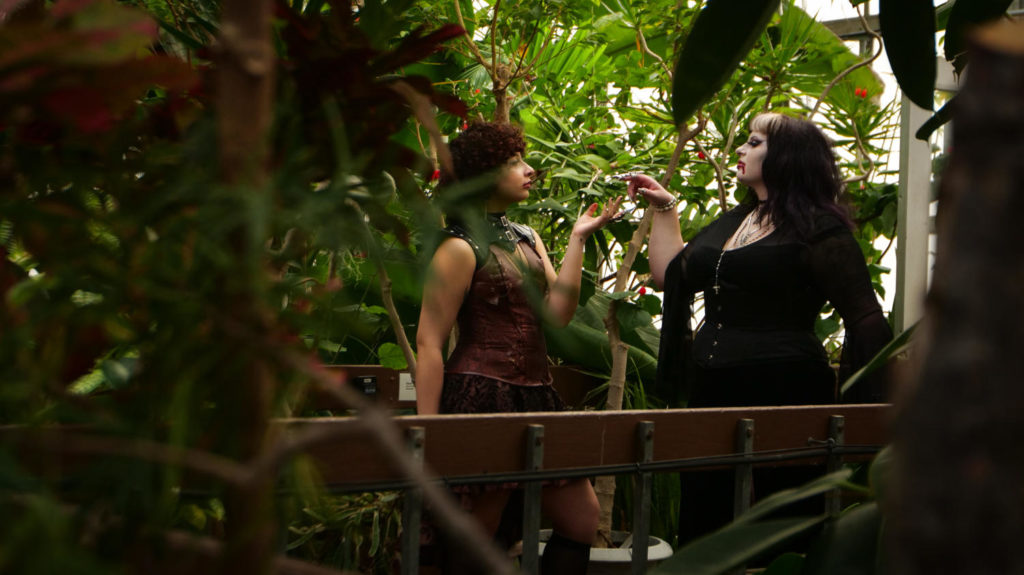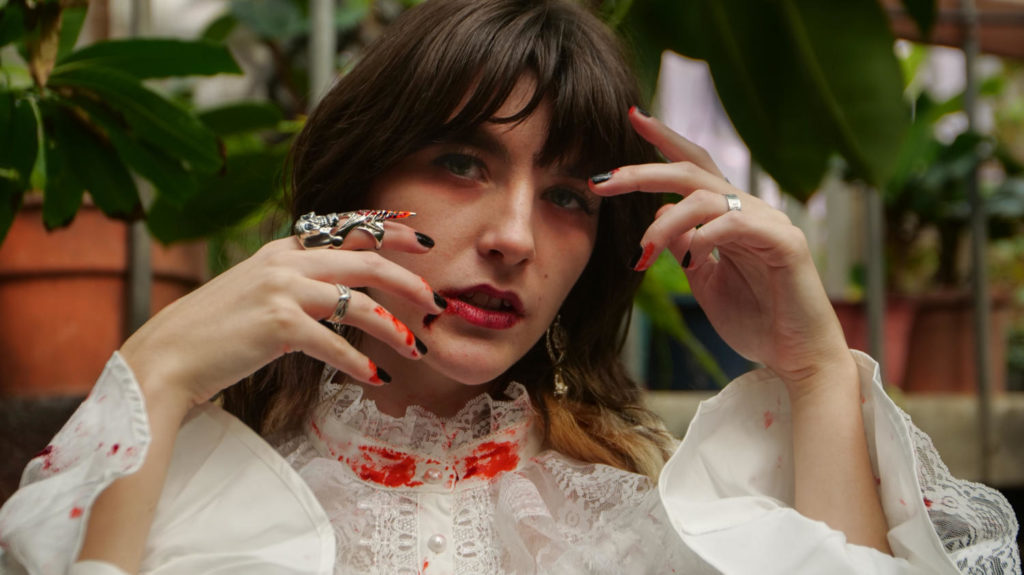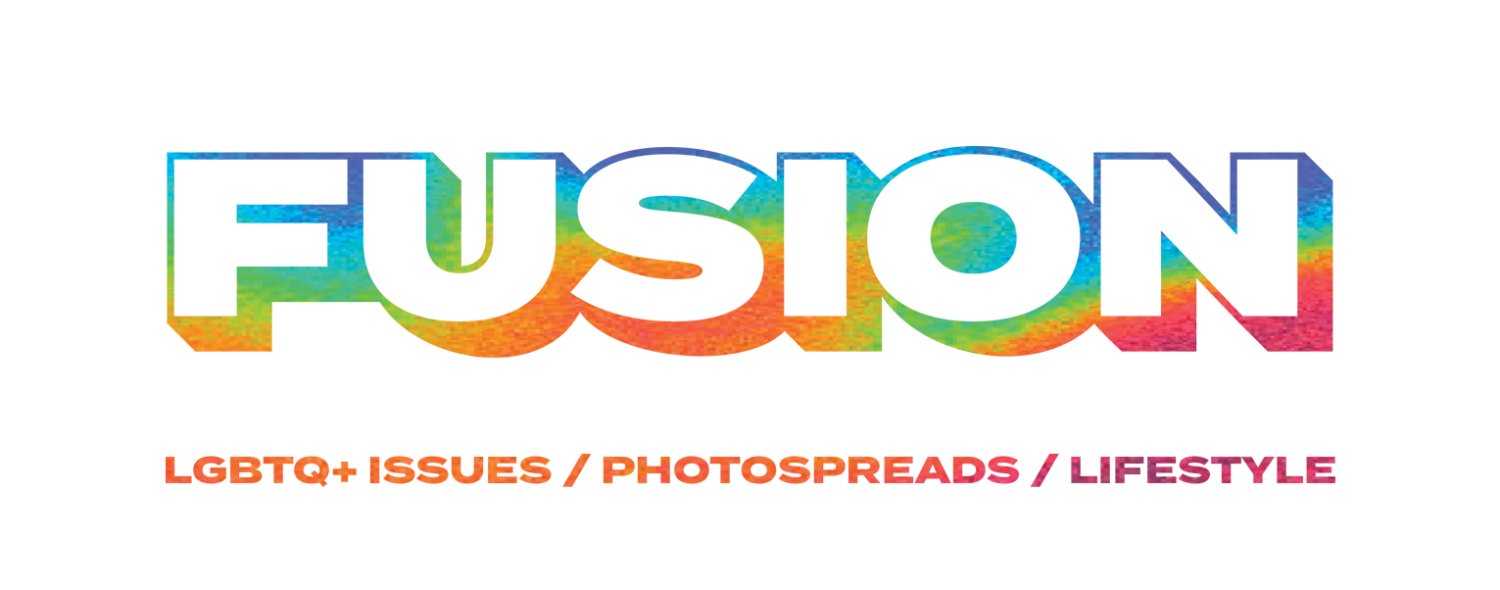
Vampires are gay – or at least the story and idea of a vampire has been queercoded since its origin. This is the subtextual coding of a character as queer or having queer attributes. The historically taboo nature of both vampires and queerness worked well together in literary symbolism, which queer writers often had to hide behind.
“It’s like the hidden aspect of it. The kind of taboo, the kind of feeling of a monster within you – something that makes you different,” said Katie Armstrong, a Kent State student. “There’s a lot of self hatred involved with vampires. They hate what they become, they hate what they are, they hate that part of them, and I feel like a lot of that is connected to kind of like, internalized homophobia and things like that.”
Queer vampires are not a new subject. One of the earliest vampire novels is the sapphic and vampiric love story of “Carmilla,” written by Sheridan Le Fanu in 1872. Later in 1907, George Sylvester Viereck’s “The House of the Vampire,” became widely known as the first male gay vampire romance story.
“I like the idea where you have to be invited into these situations where it’s like, ‘I feel like an outsider in things and I need to ask for acceptance – asked to be allowed into these spaces,’” said Morgan Russell, a Kent State student. They discussed the AIDS crisis of the 1980s and 1990s having a role in enforcing the connection between vampires and the queer community. They see that from this, there developed a direct correlation to blood and the idea of vampires as tainted beings because of the consumption of blood. “But on the flip side, just the decadence and consumption and just the grandiose nature of vampirism is so good in a queer context.”
Even in their origins, both mythological and in literature, vampires have an inherent tie with queerness. Writing vampire stories was a way for writers to express the struggles they faced without outright admitting to their queerness.
The show What We Do In The Shadows (WWDITS), created by Taika Waititi, is a mockumentary style series that follows a group of four vampires and a familiar, a human servant to one of the vampires. Nando, Laslow, Nadja, and Colin Robinson are all vampires with Guillermo who cleans up after everyone’s messes, but later becomes a bodyguard for them.
WWDITS has no lack of queer representation. “All of our characters are completely pansexual,” said Paul Simms, writer and producer, in an interview with GLAAD. In the first episode, an elder vampire known as The Baron is introduced by both Nadja and Laslow who had separate affairs with him. With that one joke, WWDITS committed itself to a queer inclusive story. It’s easy to make vampires extremely queer because they already exist with an identity that is outside traditional views. These are thousand year old beings who do not have to follow the same societal identity structure followed today.
“It’s nice to just see [queer identities] normalized and talked about because I feel like the running joke here are exactly two pieces of media that have this identity,” said Armstrong, who talked about how rare it is to see lesser known identities. “I feel like queer narratives are more hard hitting where they’re placed in a broader narrative that isn’t just that very specific coming out experience.”
Most queer representation in the media consists of coming out stories. These feel-good, cisgender digestible pieces are rampant and make up the majority of supposed representation.
Armstrong thought this is partially why WWDITS is so good. “It isn’t your railroaded coming out, bullshit homophobia, everyone accepts me in the end, we’re all handy dandy everyone shakes hands, hugs, whatever.” It’s somehow more real, even with all the supernatural shenanigans. Representation without the focus of the story being that the characters are queer is refreshing to many. Instead of focusing on what it means to struggle because you are queer it shows what it means to be queer and struggle outside of it. Queer people don’t entirely exist within the context of coming out, the majority of what is portrayed in the media.
“You’ve turned the queer experience into a commodity,” said Russell. “People love a struggle, they love a story where it’s victimizing, but sometimes it’s good to just have something where I can be happy, where it’s not where the character I like is just killed.” While technically, yes, coming out stories are representation, it’s really not the representation the community needs.
Most queer stories have also historically focused on gay white men. It’s important to have more expansive representation and have characters that are not just conventionally attractive cis gay white men. “I want butches already” said Russell. They also think people need to be more open to different kinds of representation. “You need to be able to watch something that doesn’t have your very specific representation. You need to be there for everybody in the community, so that [the queer community] can have more.”
Armstrong said, “People don’t want to watch more stories and movies of crimes being committed against them. They want to see things like What We Do In The Shadows where it’s, for once, fun vampires and also yeah, they’re gay, you know?”

